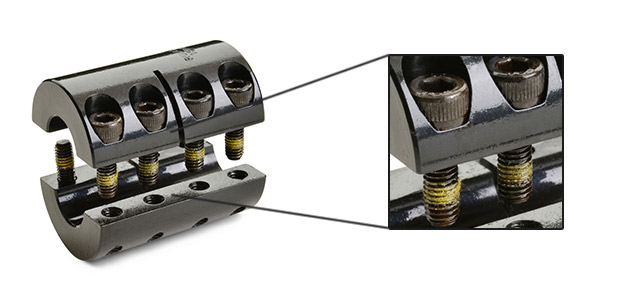Old Tricks for New Dogs
The Latest Developments for Wind Turbines Rely on Proven Technologies
In the fast-paced and high-tech world of wind turbine development and manufacturing, it’s all about incorporating the latest technology, right? Not so fast, say the experts at Voith Wind, established in 2007 as a new division of the German company Voith Turbo.

With Voith’s WinDrive technology, the maximum operating loads in the drivetrain are reduced by up to 20 percent for the tower and foundation.
Voith, now more than 100 years old, manufactures components of industrial turbines and compressors, including hydrodynamic and mechanical drive systems for energy generation, petrochemical plants, metallurgical processing and other industries. In addition, more than a million units of Voith turbo couplings have been installed in quarrying, mining and other applications.
Some of those well-established products and technologies are suited to applications in megawatt-sized wind turbines, says marketing manager Thomas Genz.
In fact, Voith Wind has developed the WinDrive unit, a complete power transmission package for wind turbines. Production began in March on the first 18 units, which are scheduled to be included in DeWind model 8.2 wind turbines being installed at wind farms in Argentina and Texas this year.

The highly mechatronic system is a single component with a size of approximately 2 m long x 1.5 m diameter.
One of the challenges facing wind turbine manufacturers is being able to supply steady voltage to the power grid when the input—windpower—is variable. Most current-generation wind turbines use a mechanical gear drive coupled with a frequency converter to ensure that steady stream of power. The problem with that, Genz says, is that frequency converters are failure-prone. In fact, the mean time between failures (MTBF) for frequency converters is about two years, Genz says.
The WinDrive system replaces the mechanical gearbox found in most modern wind turbines with a hydrodynamic gearbox. This type of variable-ratio gear drive automatically converts variable input speed to a constant output speed.
Because of that constant output speed, the WinDrive system doesn’t need complicated power electronics. It can be hooked up directly to a synchronous generator, the same type of generator used for many years to provide reliable power to the grid at conventional, fossil fuel-powered plants. By eliminating the power electronics, you increase the system’s overall reliability, especially considering the track record of similar equipment operating in other industries.

By eliminating the frequency converter and step-up transformers, the complexity of the wind turbines is reduced significantly.
“The MTBF of traditional Voith hydrodynamic speed converters is 39 years,” Genz says. That figure is based on variable-speed drives used on pumps and compressors in the oil and gas industry as well as at traditional power plants generating electricity from 1 to 30 megawatts.
But reduced down time isn’t the only way the WinDrive can save turbine operators money. Because the WinDrive is designed for variable-speed operation, the wind rotor can be operated at the aerodynamic optimum speed for the rotor, even at different wind speeds. As a result, the overall efficiency of a wind farm improves by more than 1 percent, Genz says.
The WinDrive also provides initial cost savings on the equipment itself. Due to the elimination of the transformer and frequency converter, along with the reduction of size and weight of the generator and gearbox required, the drive system from the rotor to the power grid costs about 10 percent less than drive systems currently being used, Genz says.
Because the WinDrive uses fewer components, and because it’s smaller and more compact, it weighs less—75 tons compared with 100–180 tons for competitive drive systems. In large systems, this translates into steel and cement material savings of up to 20 percent for the tower and foundation. Per wind turbine, this means hundreds of tons in weight that can be saved.
In January Voith Wind was selected as one of five finalists from among 269 entrants for the “Innovation Prize in German Industry,” which is awarded annually to a company for its outstanding innovation. Only companies whose developments and products have demonstrated significant advances over current technology are considered for the award.
Although no WinDrive units are yet operating in the field, Voith is confident the new product will be well received. “The product is a highly innovative product meeting the requirements of the market and providing exceptional value to the customers,” Genz says.
Even better, the company has already received contracts for 100 more WinDrive units in 2008.
For more information:
Voith Turbo Wind GmbH & Co. KG
Voithstrasse 1
74564 Crailsheim
Germany
Phone: + (49) 7951-32-1867
Fax: + (49) 7321-37-13-81-49
www.voithturbo.com





